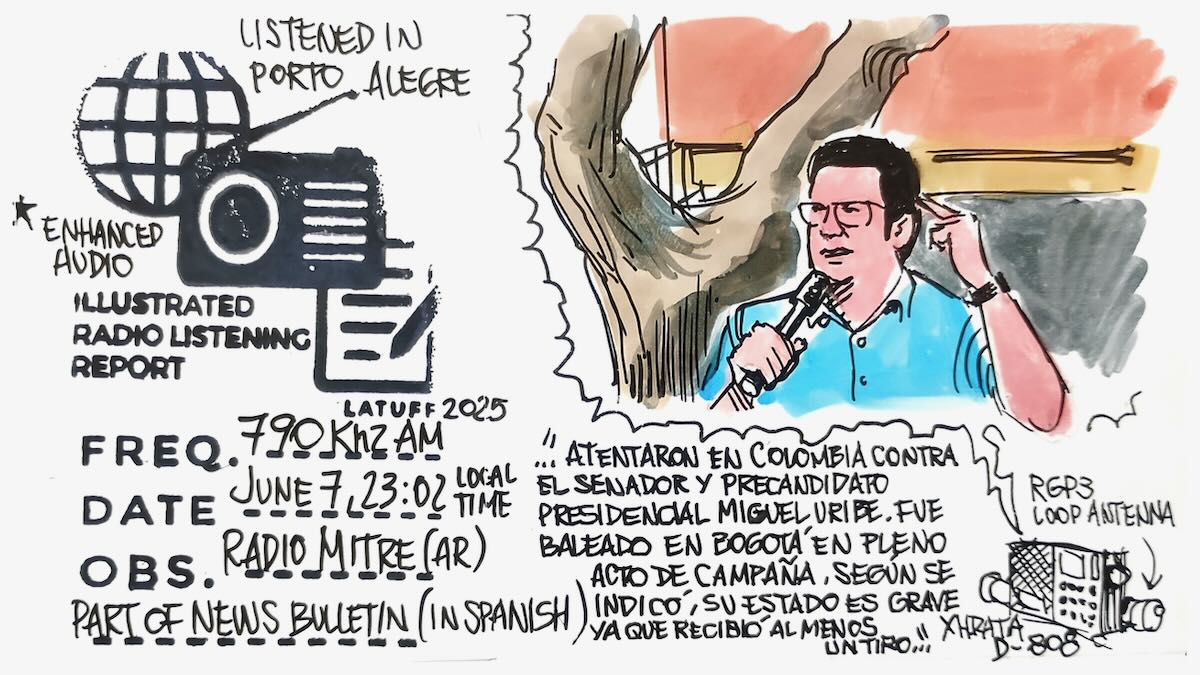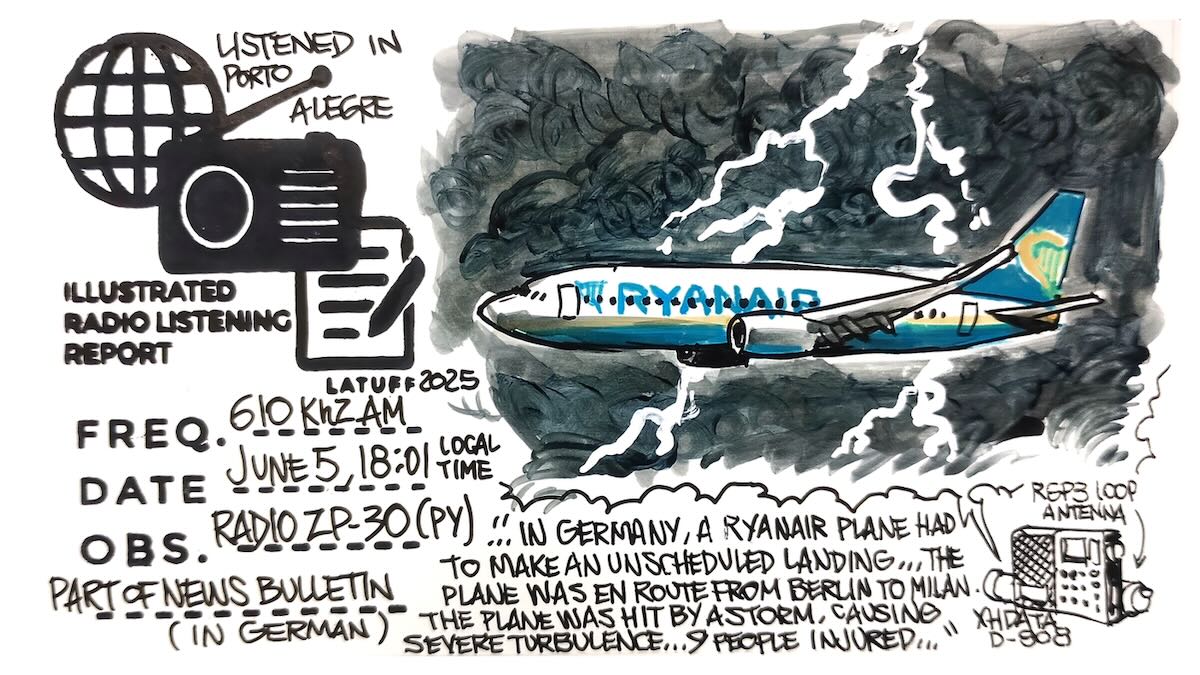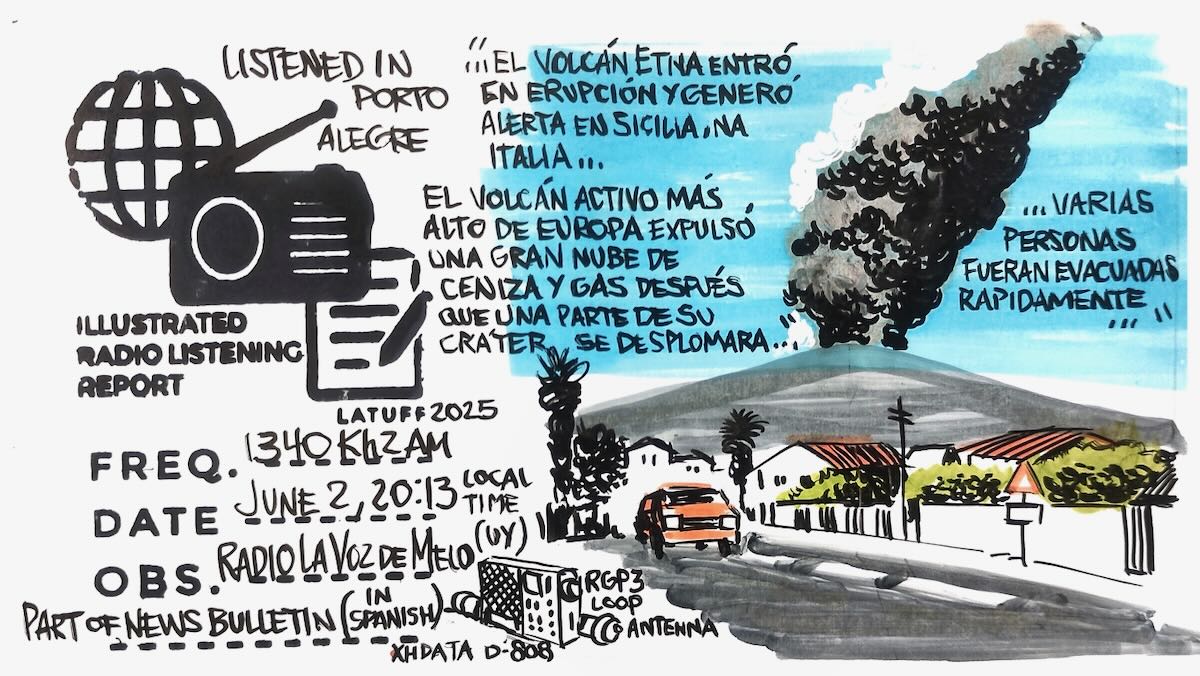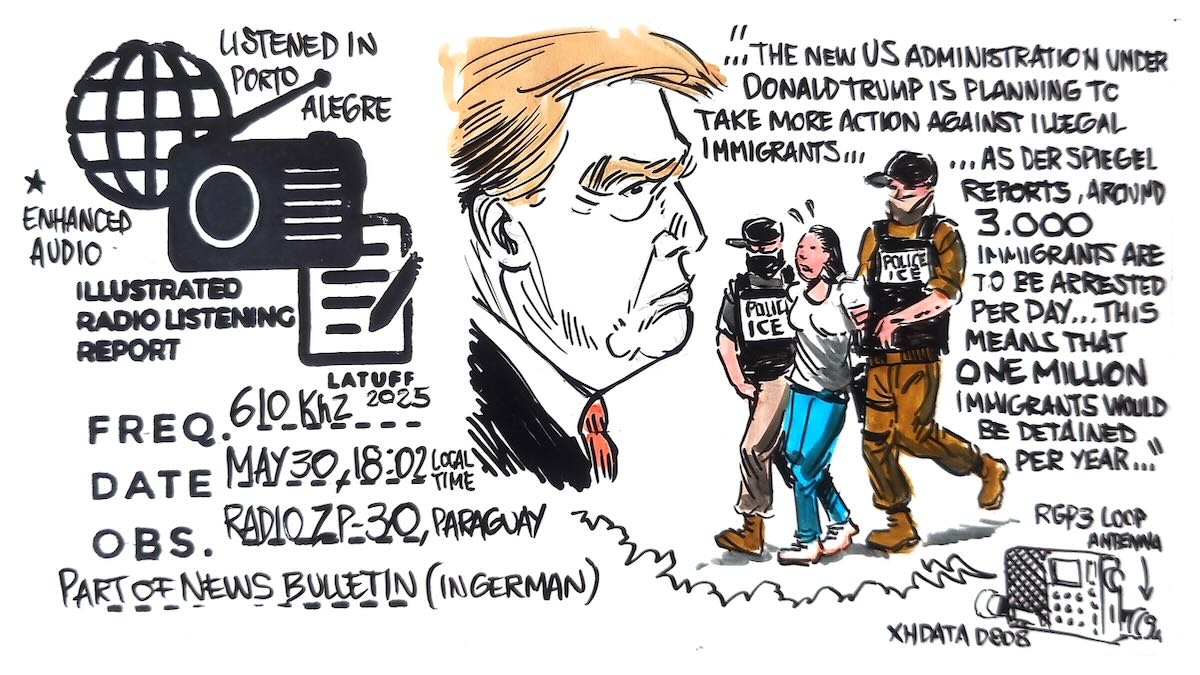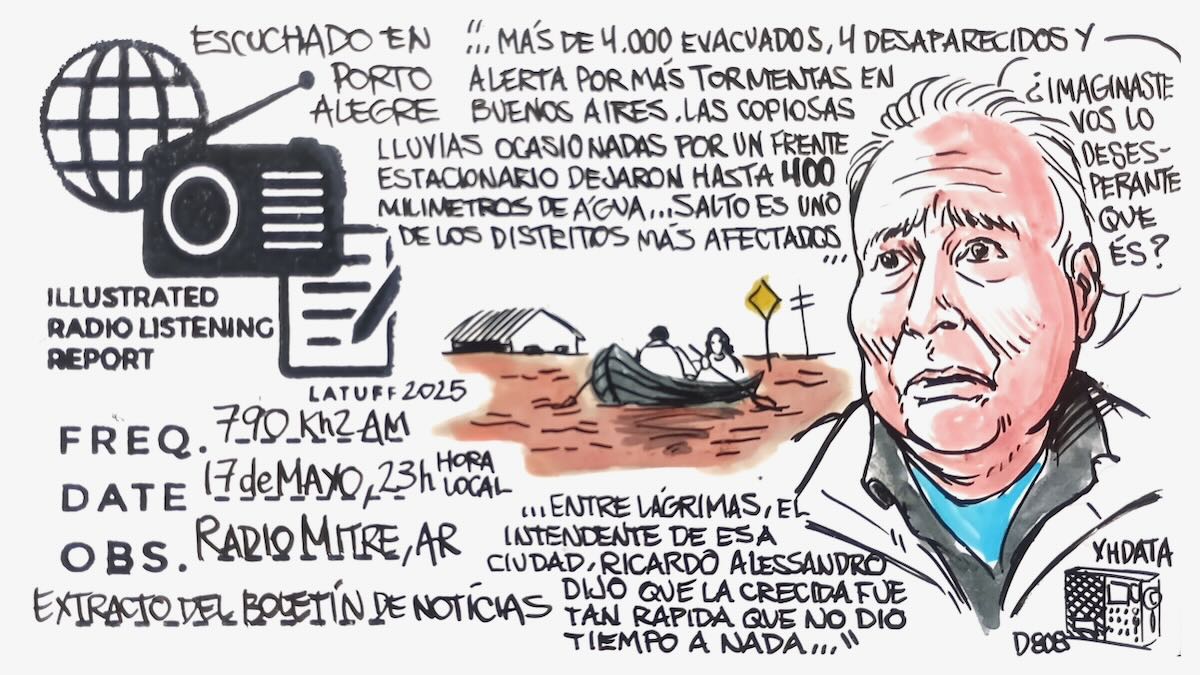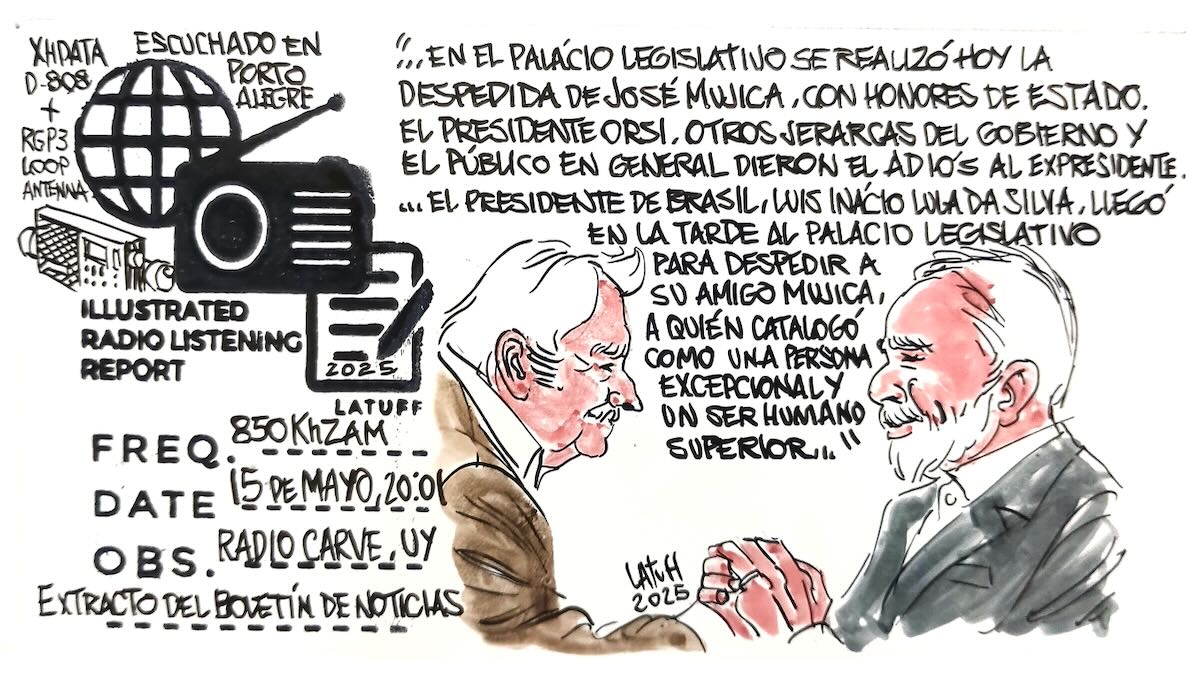Many thanks to SWLing Post contributor and noted political cartoonist, Carlos Latuff, who shares the following illustrated radio listening report of a recent Radio Mitre broadcast.
Carlos notes:
Assassination attempt against Colombian senator and presidential candidate Miguel Uribe, Radio Mitre, Argentina
Excerpt from Radio Mitre (Argentina) news bulletin about the assassination attempt against Colombian senator and presidential candidate Miguel Uribe. Listened in Porto Alegre, Brazil, on the Xhdata D-808 receiver.
“…Senator and presidential candidate Miguel Uribe was shot in Colombia. He was shot in Bogotá while campaigning. His condition is reportedly serious, having been shot at least once. A video shows the exact moment he was speaking to the audience from a platform when several gunshots are heard and Uribe falls to the ground…”

